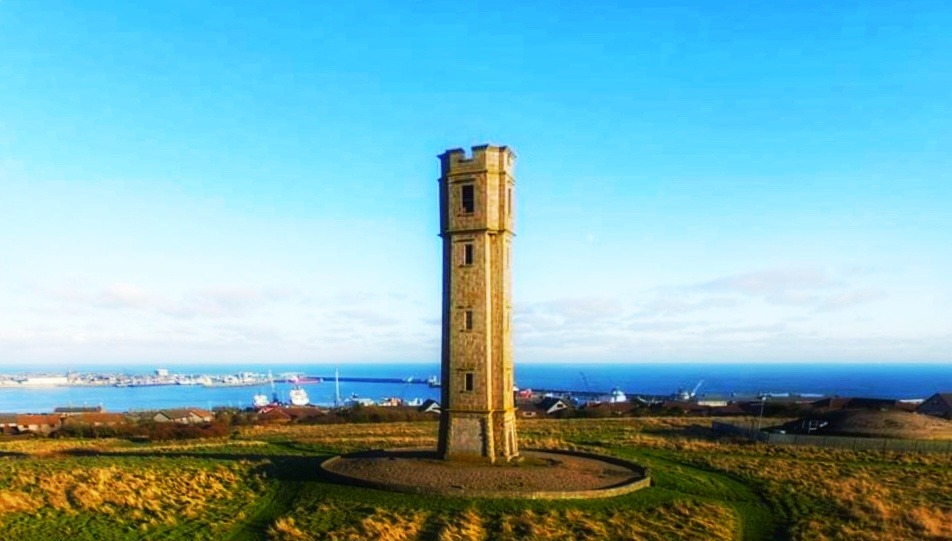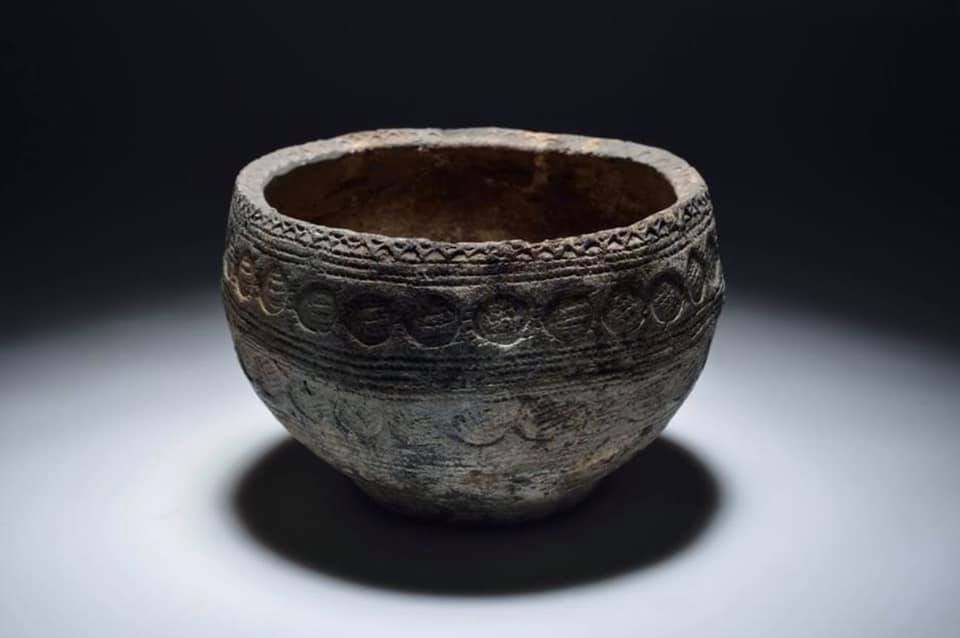The Reform Tower Peterhead Aberdeenshire built in 1834

The Reform Tower Peterhead Aberdeenshire, built in 1834 to commemorate the Parliamentary reform bill.
The Reform Tower is an historic structure in Meethill, an area to the southwest of the Scottish town of Peterhead, Aberdeenshire. Dating to 1832, it is now a Category B listed building.
It is constructed of squared granite, with rock-faced masonry at the ground floor, a simple cornice over openings and a crenellated parapet. The tower rises 58 metres above sea level. It was originally designed to be an observatory, but was not completed.
The foundation stone was laid by George Mudie of Meethill in August 1832.
A tumulus and cist containing fragments of human bones and a food vessel are recorded as having been discovered when digging the Reform Tower foundations in 1833.
Address of the Reform Tower: 10 Glenugie Cres, Peterhead AB42 2GY

Aberdeenshire has been a centre of trade for millennia, and nothing illustrates this better than this Late Neolithic food vessel found when the foundations for the Reform Tower at Meethill, Peterhead were being dug.
This bowl-shaped ‘urn’, which is over 4,000 years old, was discovered within a ‘stone crypt’ with fragments of human bone. The grey colour of the vessel and the unusual shape and designs indicated that it was not made locally.
Aberdeenshire has one of the richest and most unique archaeological environments in Britain, especially with regard to its Neolithic heritage. It is often thought that the landscapes of the past were sparsely peopled, with little interaction and isolation as the norm.
But it was not until 180 years later, during a national project about the Beaker people and their delicately-made pots, that the food vessel was identified as being Irish. Only two others of this type have been found in Scotland; one on the south-west coast and the other in the Great Glen.
The discovery of this beautiful pot forms part of a story about trade from Ireland to Galloway, where goods travelled north through the Great Glen and east to Aberdeenshire.
The intricate designs mean the original owner was probably both wealthy and powerful, and experts think that the whitish powder rubbed into the design may be burnt human remains.

Plan Ahead with Peterhead.Live on

